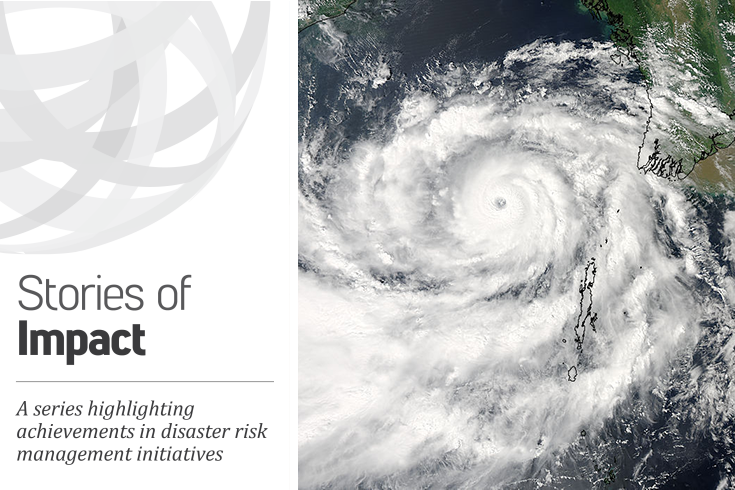- Nearly one million coastal residents were relocated in a massive evacuation effort ahead of Cyclone Phailin, partly enabled by the shelters and emergency roadways that were funded through the National Cyclone Risk Mitigation Project (NCRMP), as well as frequent mock drills and extensive community-level preparation.
- Successful disaster risk management initiatives, some involving the support of the Global Facility for Disaster Reduction and Recovery (GFDRR), enabled a 99.6% reduction in fatalities from a comparable cyclonic storms system 14 years prior.
- Under NCRMP, Odisha and Andhra Pradesh are adding 1,000 km of new evacuation roads, 23 bridges to better connect communities, 285 new cyclone shelters, and 140km improvements to existing coastal embankments.
- GFDRR has contributed $270,000 since 2011 to help implement the National Cyclone Risk Mitigation Project (NCRMP) in Odisha and Andhra Pradesh, improving early warning systems, building risk mitigation infrastructure, and increasing capacity for vulnerability assessment.
Cyclone Phailin, the strongest cyclone in nearly a decade and a half, made landfall in Odisha, India on October 12, 2013, with a Category 4 rating. Three-meter storm surges and sustained wind speeds of well over 200 kilometers per hour battered the coastline for hundreds of kilometers. But amazingly, fewer than 50 lives were lost, a dramatic reduction from historical precedents.
The limited loss of life was largely due to effective disaster risk management and preparation by the Government of Odisha, along with support organizations, which enabled a massive evacuation of residents from vulnerable coastal areas. The World Bank and the Global Facility for Disaster Reducation and Recovery are supporting the strengthening and scaling up of these efforts through the National Cyclone Risk Mitigation Project (NCRMP).
Cyclone 05B in 1999 was the most powerful tropical cyclone ever recorded in the North Indian Ocean, bringing catastrophic losses in human life and property throughout the state of Odisha and surrounding areas. With nearly 10,000 fatalities and $5 billion in property damage, the tragedy emphasized the need for improved resilience and risk-preparation.
Because of sustained efforts by government agencies, civil society, and partners like GFDRR, the effects from the similarly-intense Cyclone Phailin in 2013 were considerably less severe. However, vulnerabilities in the region remain — more than 12 million residents were directly affected by the last major storm — and India is looking to improve social preparadness and economic resilience for future cyclonic events.
Full story here:
Full story from World bank website

